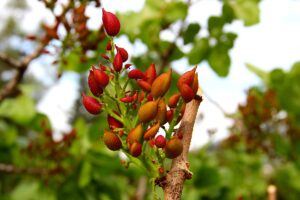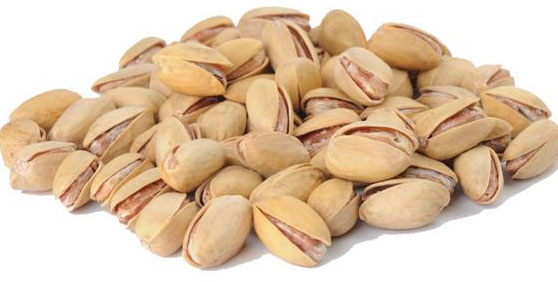A Nut-Producing Marvel
The pistachio tree is a fascinating and resilient plant that has been cultivated for centuries, producing one of the world’s most beloved nuts: the pistachio. With a rich history dating back to ancient civilizations, the pistachio tree thrives in arid climates and offers numerous environmental and nutritional benefits. If you’re interested in learning about this remarkable tree, its growth process, and the benefits it provides, read on for a comprehensive overview.

Origins and Growth of the Pistachio Tree
Native to the Middle East and Central Asia, the pistachio tree (scientifically known as Pistacia vera) has been cultivated for over 9,000 years. The tree thrives in desert-like climates, particularly in regions with long, hot summers and cold winters, such as Iran, Turkey, and California. Pistachio trees are highly drought-resistant, making them ideal for arid environments where other crops might struggle.
One unique feature of the pistachio tree is its slow growth rate. A pistachio tree typically takes 5 to 7 years before it begins producing nuts, with full production usually achieved after 15 years. Once mature, a single tree can produce thousands of pistachios each year, making it a long-term and sustainable crop for farmers.
The Lifespan and Resilience of Pistachio Trees
Pistachio trees are remarkably hardy, often living for over 100 years when properly maintained. They can endure extreme temperatures, ranging from freezing winters to scorching summers. However, they require well-drained soil and plenty of sunshine to thrive.
The trees are dioecious, meaning male and female flowers grow on separate trees. To produce pistachios, you need both a male and female tree for pollination, which is typically done by wind. This natural pollination process ensures the healthy growth of pistachios, without the need for human intervention.
https://pistachioexporter.com/can-you-eat-raw-pistachios/
How Pistachios are Produced on the Tree
Pistachio trees produce clusters of small, reddish-brown fruits known as drupes. Inside each drupe is the edible pistachio nut, which grows within a hard, beige-colored shell. As the pistachios ripen, the shells split open naturally, revealing the nut inside—a sign that the pistachios are ready to harvest.
Harvesting occurs once a year, typically in late summer or early fall. Farmers shake the trees to release the nuts, which are then collected, sorted, and processed to remove any remaining hulls. Once harvested, pistachios can be roasted, salted, or enjoyed raw.
Environmental Benefits of the Pistachio Tree
Pistachio trees offer several environmental advantages, making them a sustainable agricultural choice. Due to their deep root systems, pistachio trees help prevent soil erosion and promote water conservation by tapping into underground water sources. They also require less water compared to other nut-producing trees, such as almonds, making them an eco-friendly option in regions where water scarcity is a concern.
Health Benefits of Pistachios
The pistachio tree doesn’t just offer environmental benefits; it also produces nuts packed with nutritional value. Pistachios are a rich source of:
- Protein
- Healthy fats
- Fiber
- Vitamins like B6 and E
- Minerals such as potassium, magnesium, and phosphorus
Eating pistachios can support heart health, aid digestion, and help with weight management due to their high fiber and protein content. Additionally, pistachios are loaded with antioxidants, which play a key role in reducing inflammation and protecting the body from free radicals.
How to Enjoy Pistachios
Pistachios can be enjoyed in a variety of ways. Whether eaten as a simple snack, incorporated into trail mixes, or used as an ingredient in cooking and baking, their versatility is endless. Add them to salads, smoothies, or desserts for extra crunch and flavor.
